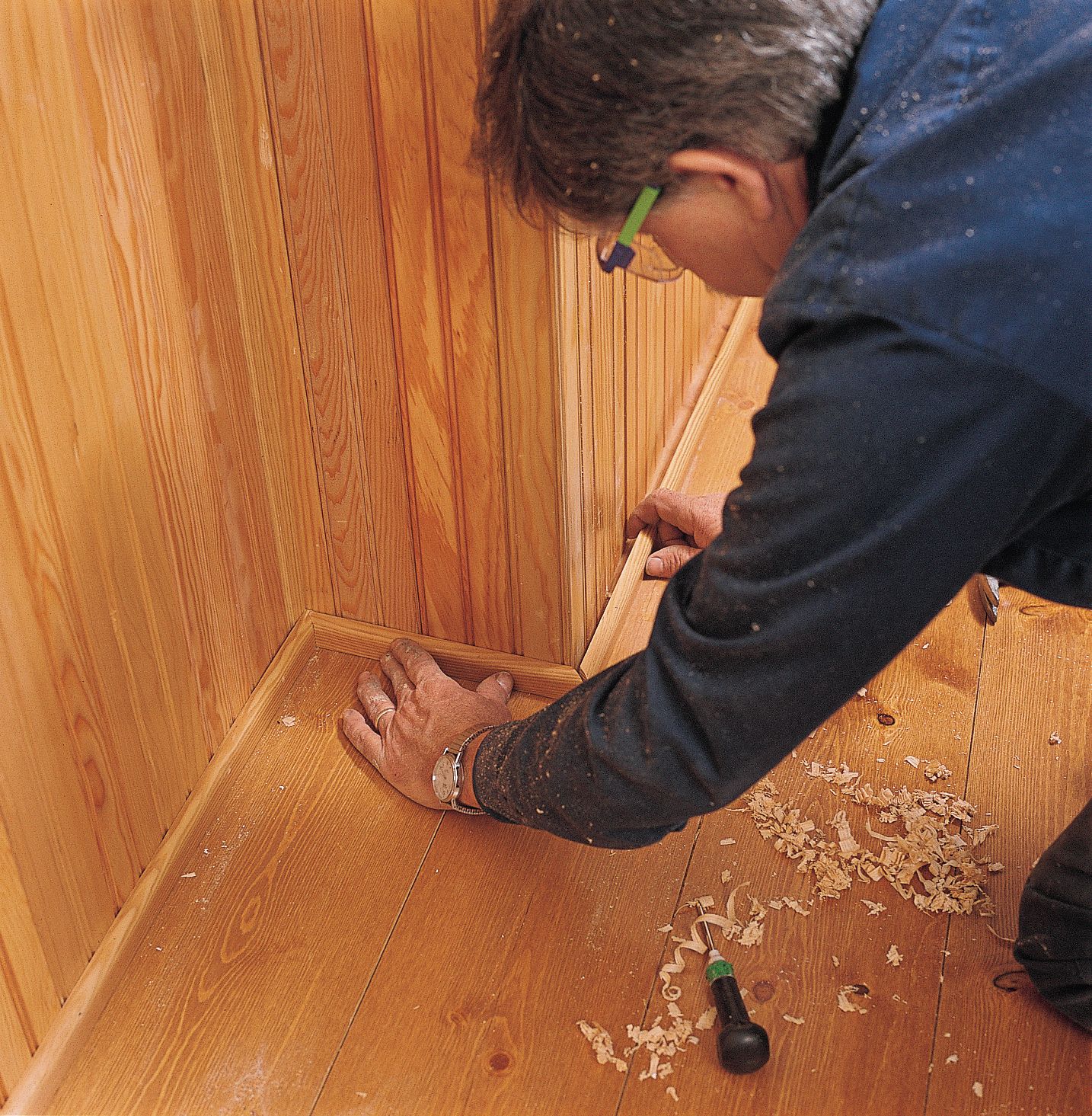Beadboard wainscoting is a classic and elegant way to add character to your home. “I love adding wainscoting to a home,” says This Old House general contractor Tom Silva. “I install it in pantries, hallways, or anywhere walls could get damaged,” he says. “It protects the wall and looks great.”
Most homeowners can install beadboard wainscoting with the right tools and knowledge. In this guide, we’ll walk you through the process step-by-step.
Required Tools Needed To Install Beadboard Wainscoting
Here’s what you’ll need for the project.
 Drill/driver
Drill/driver level – 2-foot
level – 2-foot level – 4-foot
level – 4-foot Coping saw
Coping saw Biscuit joiner
Biscuit joiner Utility knife
Utility knife Nailset
Nailset Caulk gun
Caulk gun Jigsaw
Jigsaw Combination square
Combination square Tape measure
Tape measure Block plane
Block plane Brad nailer
Brad nailer Hammer
Hammer Table saw
Table saw Power miter saw
Power miter saw Compass
Compass
Beadboard Wainscoting Overview
Before diving into the installation process, you’ll need to understand the components of beadboard wainscoting. Typically, it consists of vertical beadboard panels, a baseboard, a chair rail or cap rail, and sometimes additional decorative moldings. The height of wainscoting can vary, but it’s commonly installed at 32–36 inches from the floor.
Here are some tips when working around doors, windows, and floors:
- Sett the wainscot on a baseboard and cover the joint with a cap molding for added detail.
- Notch the cap rail to slightly overlap the casing for doors and windows.
- When beadboard meets a window stool, notch out the back of the stool’s horn and slip the boards behind it.
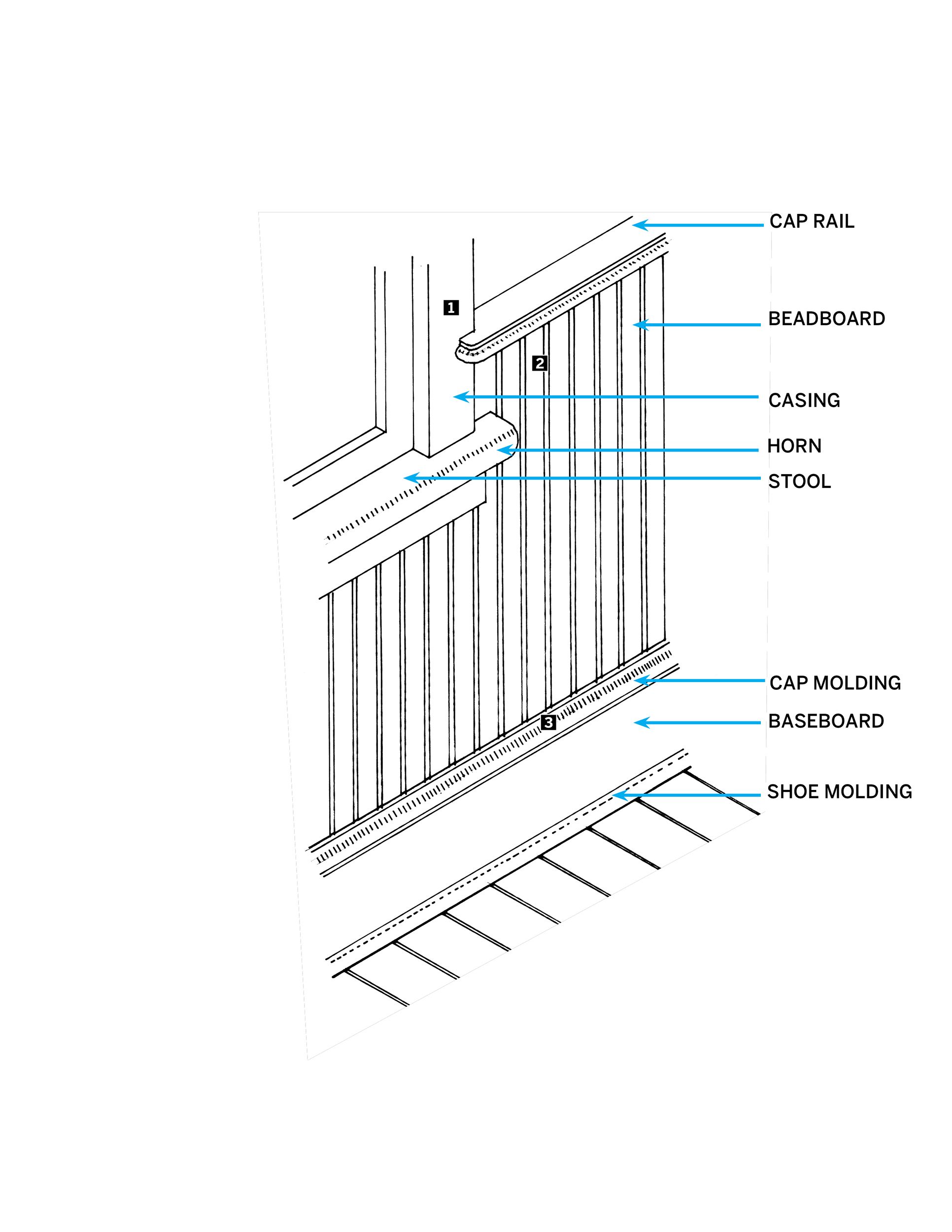
Draw the Layout Line for the Beadboard Panels
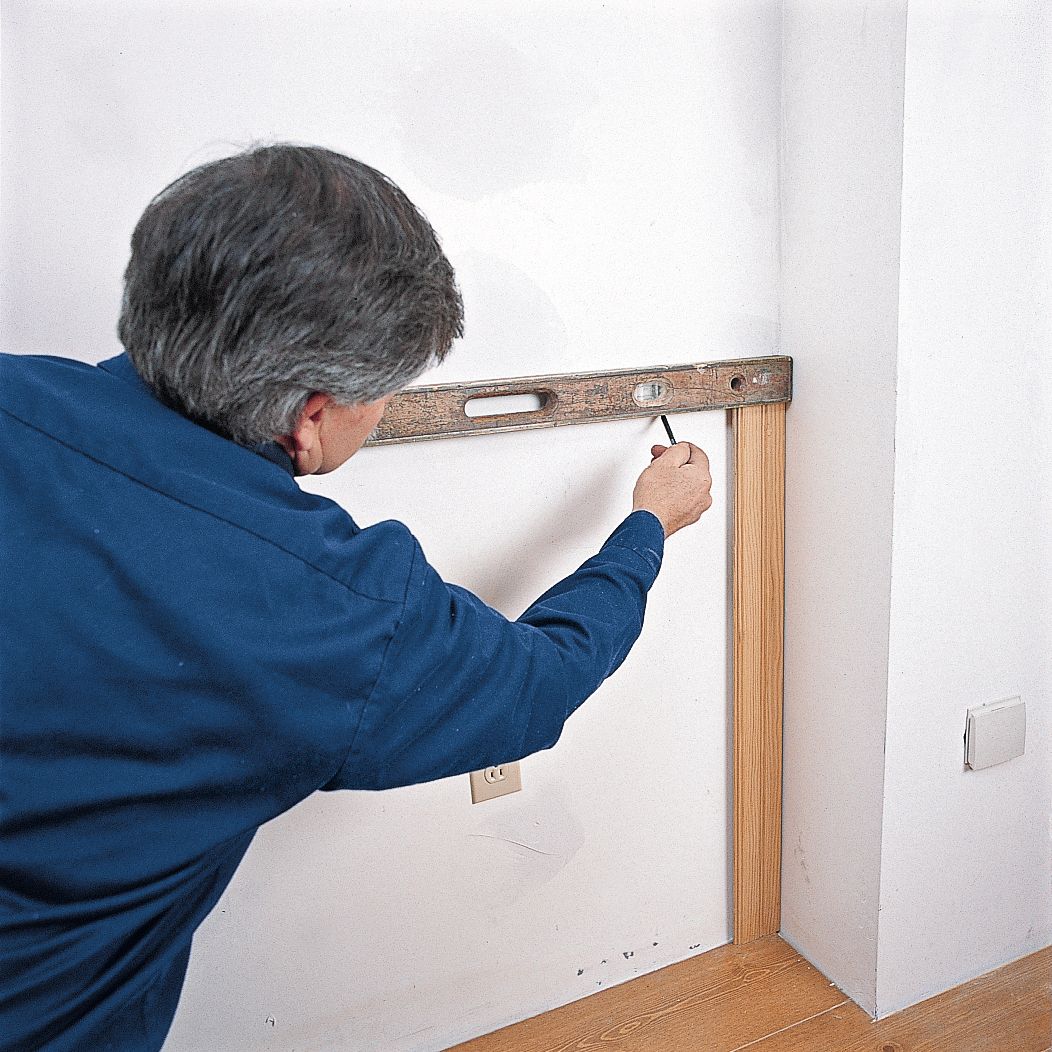
The first step in installing beadboard wainscoting is establishing a level layout line around the room. This line is the guide for the beadboard panels’ top edge, making alignment and positioning much easier.
- Find the highest point of the floor along the wall using a 4-foot level.
- Place a cut beadboard piece vertically against the wall at this high spot.
- Set the level on top of the board, ensuring the bubble is centered.
- Draw a pencil line on the wall using the level’s underside as a guide.
- Continue this process around the entire room to create a continuous layout line.
For larger rooms, consider using a water level and chalk line to make the process easier and more accurate. The layout line ensures your panels are aligned correctly and that the finished wainscoting looks symmetrical.
Start Your Beadboard Installation at a Corner

Beginning your installation at the right spot helps achieve a pro finish. If the room has an outside corner, start there. Otherwise, begin at an inside corner.
Use construction adhesive to stick a mitered corner piece to the wall, then insert shims (if necessary) to ensure the piece is plumb. Toenail 4d nails through both tongues to secure the piece while the adhesive sets. Use a level while nailing to maintain plumb alignment.
Remember to start the installation where it’s most visible and try to end it in a less conspicuous area. This keeps slight misalignments hidden.
Glue and Nail the Beadboard Panels
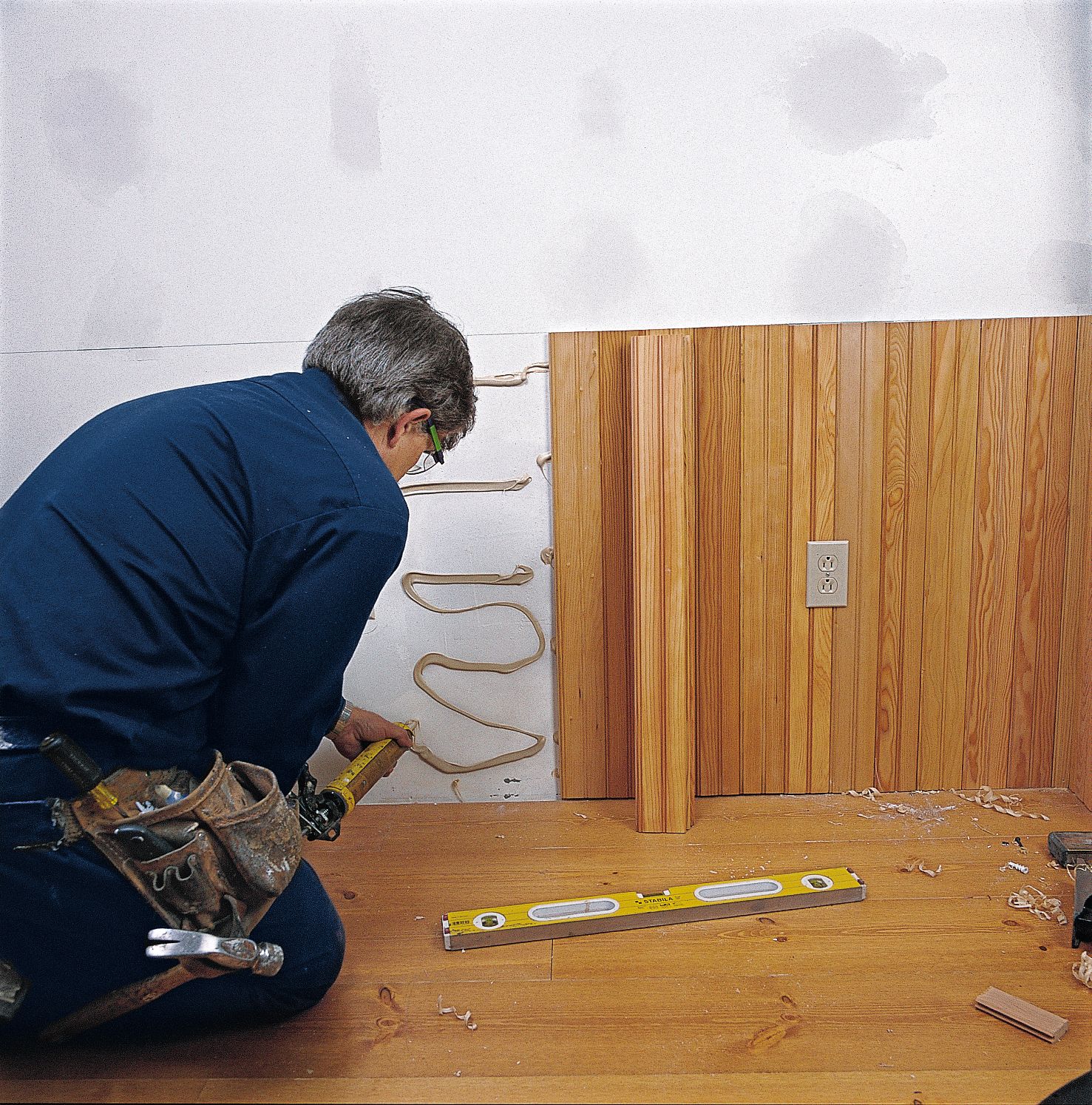
With your starting point established, it’s time to begin installing the beadboard panels. Follow these steps to ensure the panels adhere securely:
- Apply four or five horizontal stripes of construction adhesive to the wall, each about 1 or 2 feet long.
- Slip each board’s groove over the tongue of the previous one, aligning the top edge with your layout line.
- Press the wood firmly into the adhesive to ensure good contact.
- Continue pressing and aligning each panel, ensuring consistency with the layout line.
The adhesive helps in providing a robust bond, making the panels less likely to shift over time and maintaining your installation’s integrity.
Nail Up Beadboard Planks
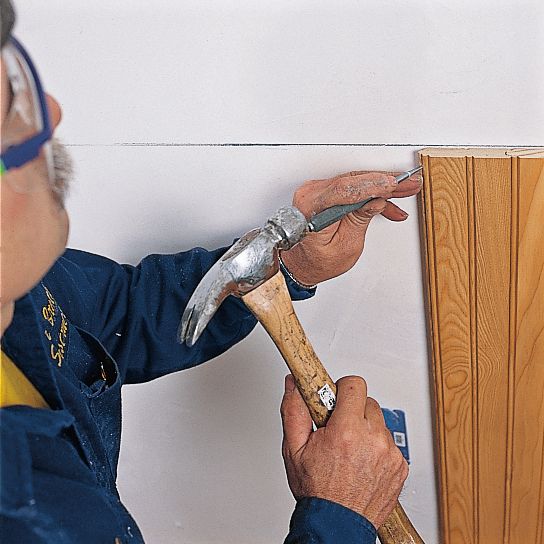
Toenail the tongue at the top and bottom of each plank. If using a hammer, drill pilot holes first and use a nail set to countersink the nails. For bowed strips, you may need to add a third nail halfway down. Check every third or fourth board for plumb using a level, making slight corrections as needed.
Applying adhesive in small sections helps prevent it from skinning over before you can install the beadboard. Consistently checking the boards ensures that they remain straight and aligned.
Cut Beadboard Around Electrical Outlets
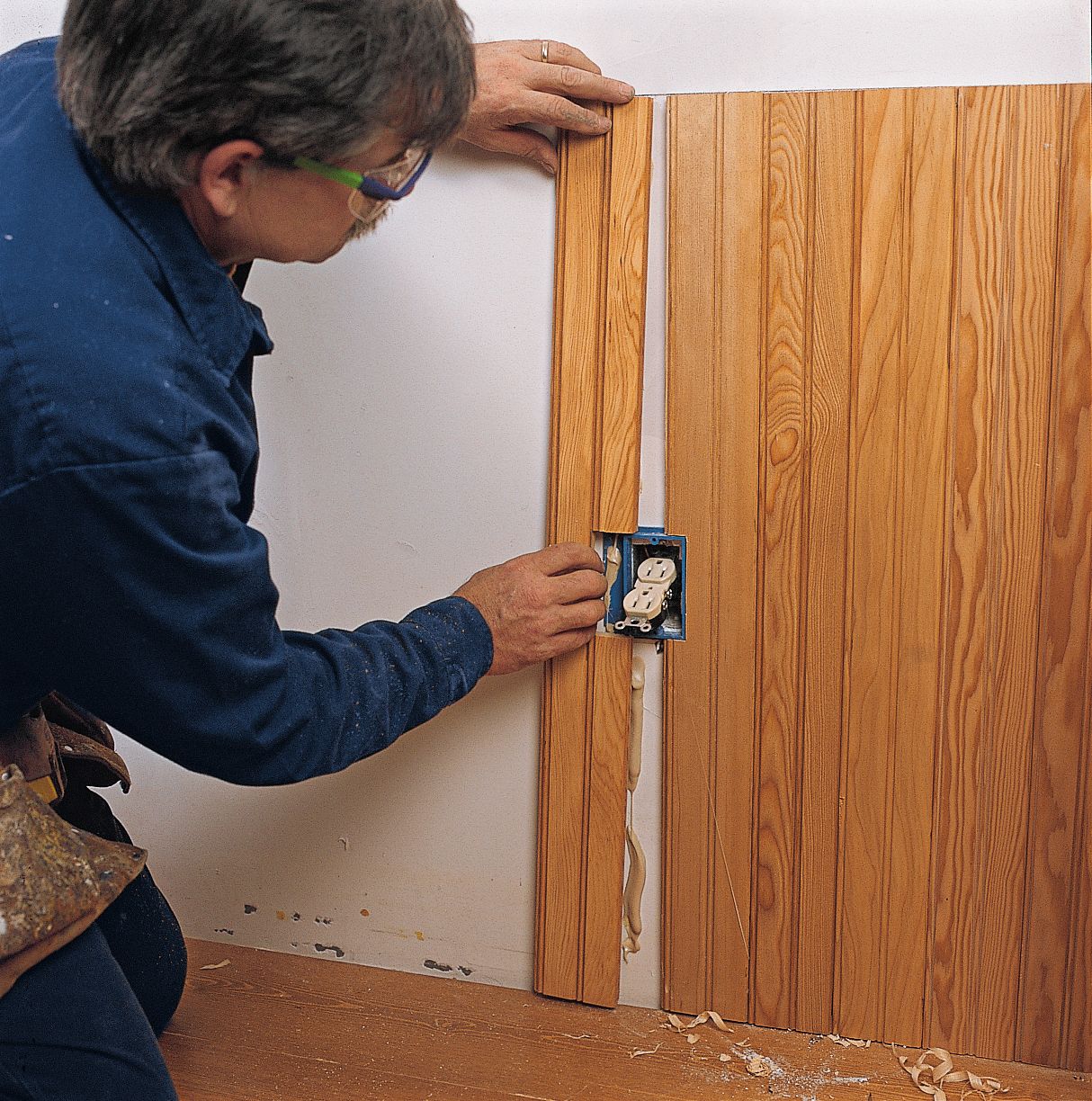
Dealing with electrical outlets requires careful measurement and cutting. Follow these steps:
- Rest the board’s bottom edge on the upper lip of the outlet box.
- Mark where the board meets the corner of the outlet.
- Hold the board alongside the outlet, aligning its top edge with the layout line.
- Mark where the board touches the top and bottom of the outlet.
- Use a combination square to draw the outline for the notch.
- Cut out the notch with a jigsaw using a metal-cutting blade to reduce splintering.
- Glue and nail the board as before.
If necessary, repeat this process for the opposite side of the outlet. This ensures that the outlet is framed correctly and looks tidy.
Fit the Beadboard Against Door Casing
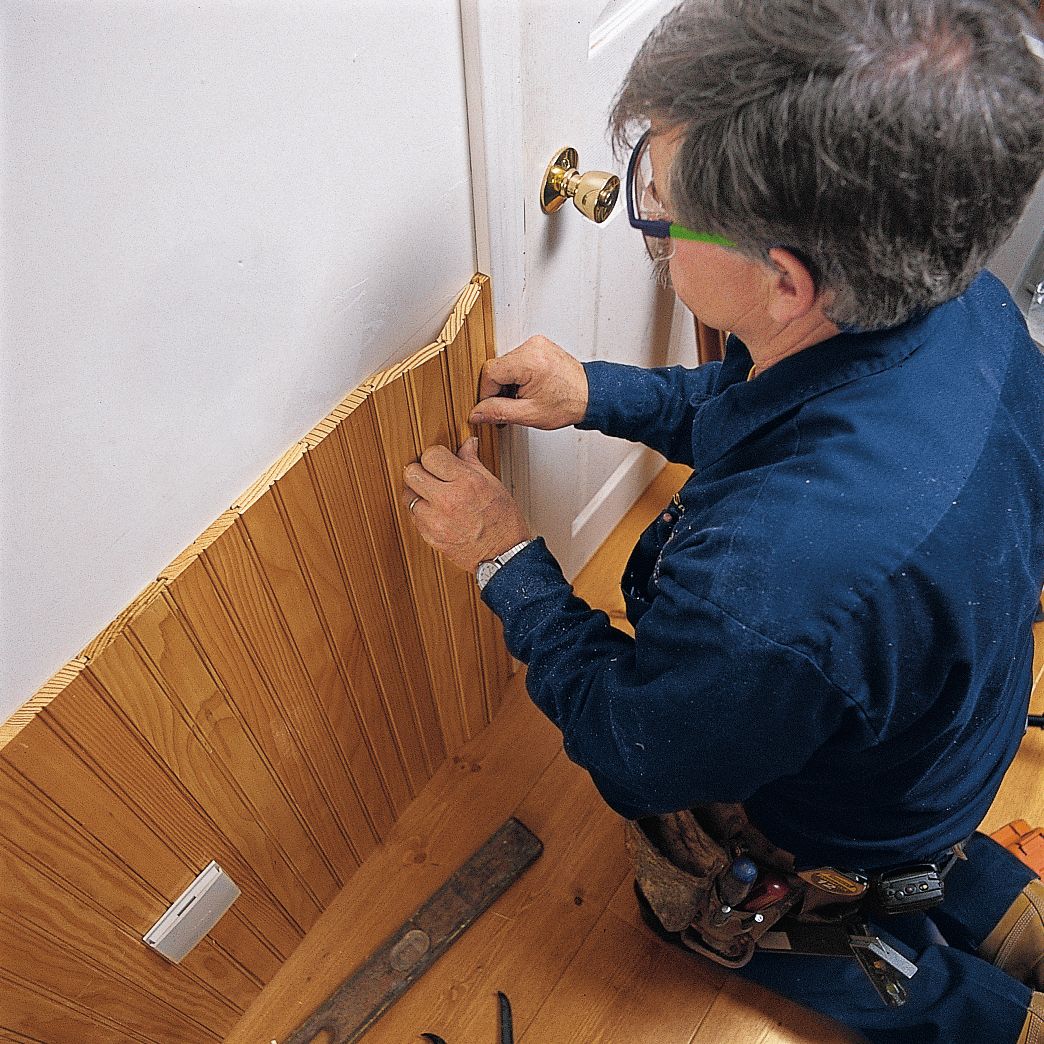
When approaching a doorway, you’ll need to adjust your installation technique to fit the beadboard snugly.
- Measure the distance from the casing to the top and bottom of the beadboard.
- If there’s a difference, gradually fan out successive pieces until they’re parallel with the casing.
- Dry fit the last two full-width boards and measure the remaining distance to the casing.
- Cut the third piece to width on a table saw.
- Apply adhesive and press all three pieces together, bending them slightly to fit between the casing and existing wainscot.
This approach also works for inside corners, though the fit doesn’t need to be as precise since the next piece will cover any gap. Proper fitting ensures a seamless integration around the door, adding to the wainscoting’s attractiveness.
Mark Cap Rails on the Wainscoting to Length
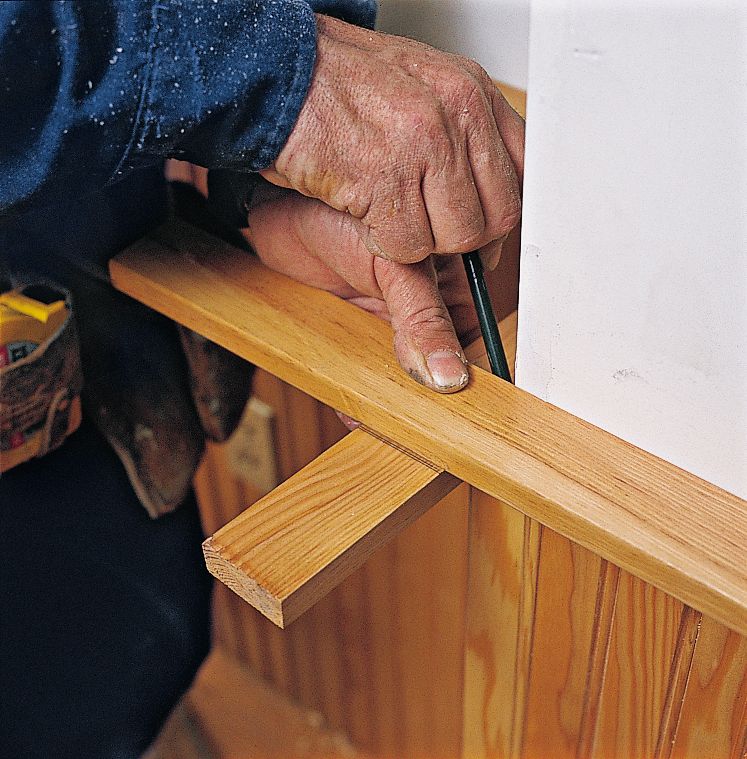
For corners that aren’t exactly 90 degrees, use this technique to find the precise miter angle:
- Hold two pieces of 1-by-2 cap rail in place, overlapping them at the corner.
- Draw pencil lines on both sides where the upper rail overlaps the lower one.
- Once marked, use these lines as a reference point for creating the miter angle.
These steps help ensure that your miter cuts are accurate, enabling you to achieve tight-fitting corners for a polished look.
Mark Miter-Cut on Cap Rails
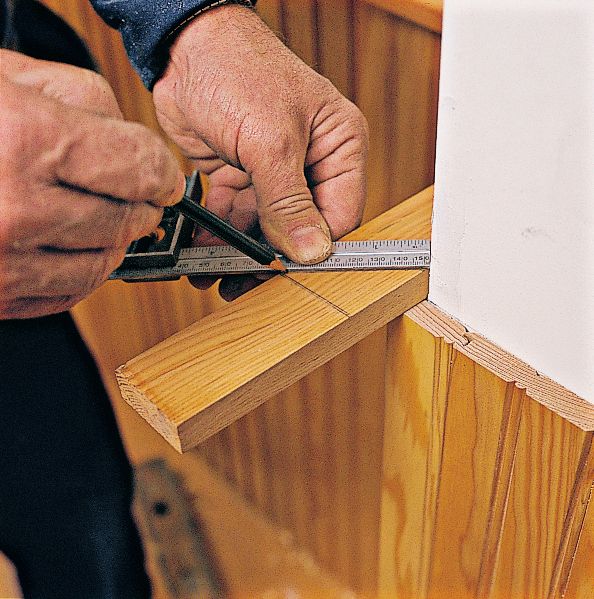
To create perfectly mitered corners, move the upper rail aside and hold the marked lower rail in place atop the beadboard. Use a combination square to connect the two lines, creating a diagonal line that represents the miter angle.
Cut the first miter, then use that rail to mark the angled cut on the adjoining cap rail. Then, join the two rails at the corner with glue and compressed wood biscuits for added strength.
Proper miter cuts ensure that your corners align perfectly, giving a professional look to your beadboard wainscoting.
Nail on the Cap Rail To Complete the Wainscoting
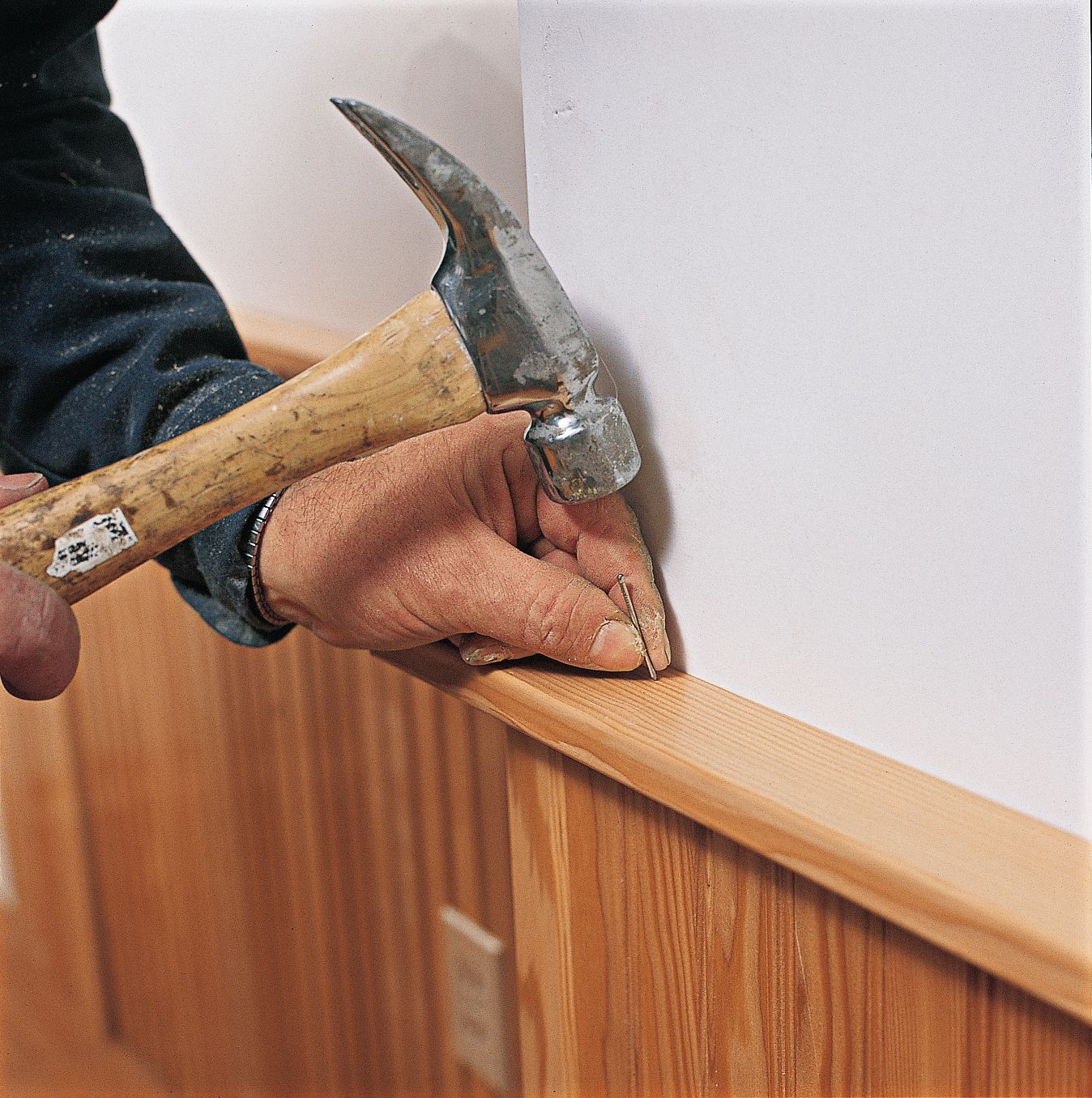
Installing the cap rail completes the wainscoting and adds a finished edge. For fast, accurate cuts, use a miter saw.
Start by fitting the cap rail between the inside corners. Miter and glue all joints for a seamless look. Toenail the cap into the edge of the beadboard with 4d finish nails. Ensure each section is level and firmly attached.
Attach the Moldings Onto the Wainscoting
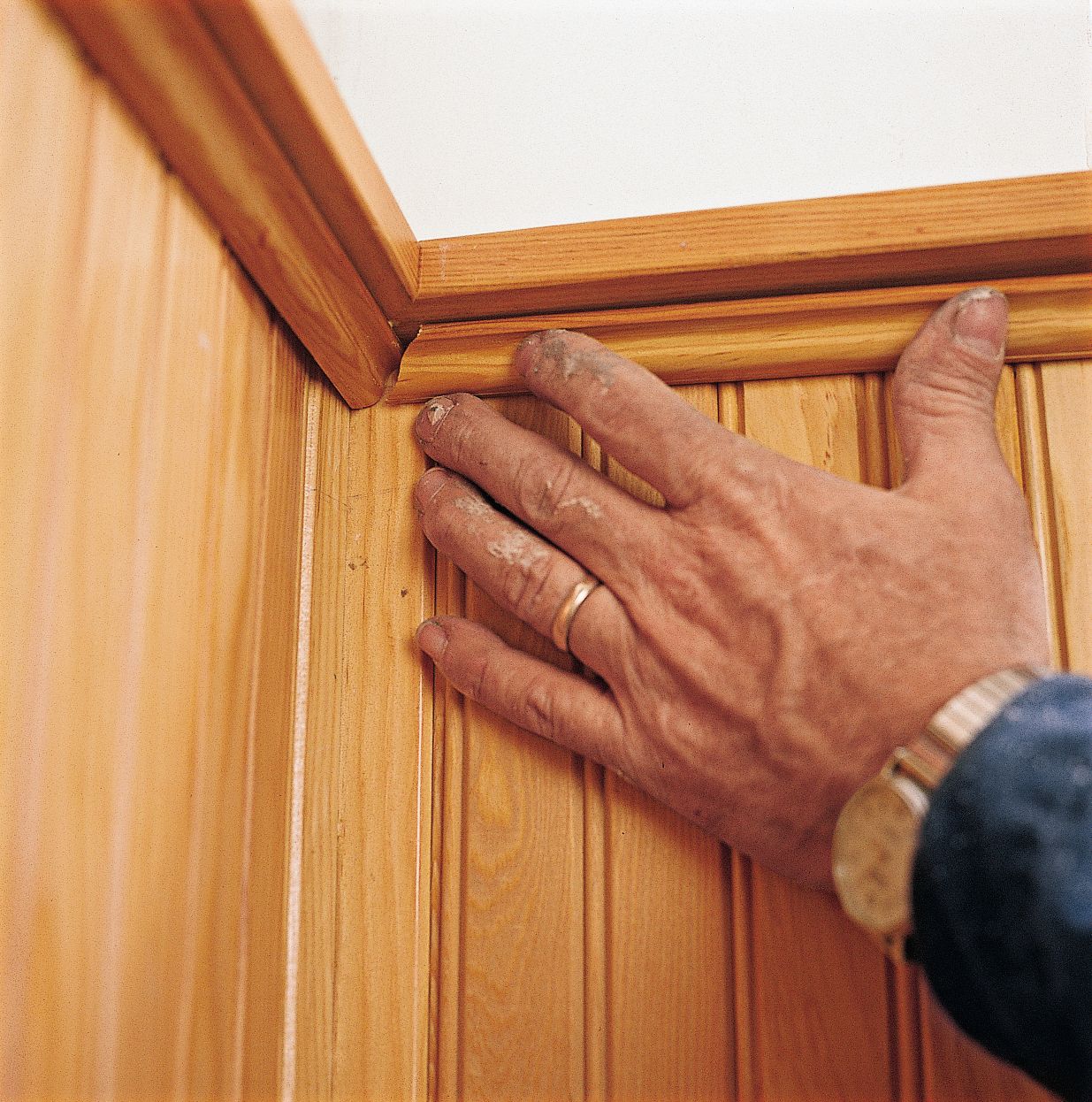
The final step is to attach the decorative moldings for added detail:
- Begin between inside corners for both ogee and shoe moldings.
- Secure ogee molding to the underside of the cap with 3/4-inch brads.
- Use mitered joints for outside corners and cope joints for inside corners.
- Install shoe molding against the floor using the same techniques.
For coped joints, make relief cuts into the mitered end to reduce the chance of the blade wandering during cutting. Adding these moldings enhances the decorative quality and gives extra protection to the wainscoting.
Our Conclusion
The process may seem intricate, but breaking it down into these manageable steps ensures a successful installation. Using the correct tools and techniques guarantees a quality, long-lasting finish that will elevate your home’s design. Remember to take your time, especially when working around obstacles like outlets and door casings.
